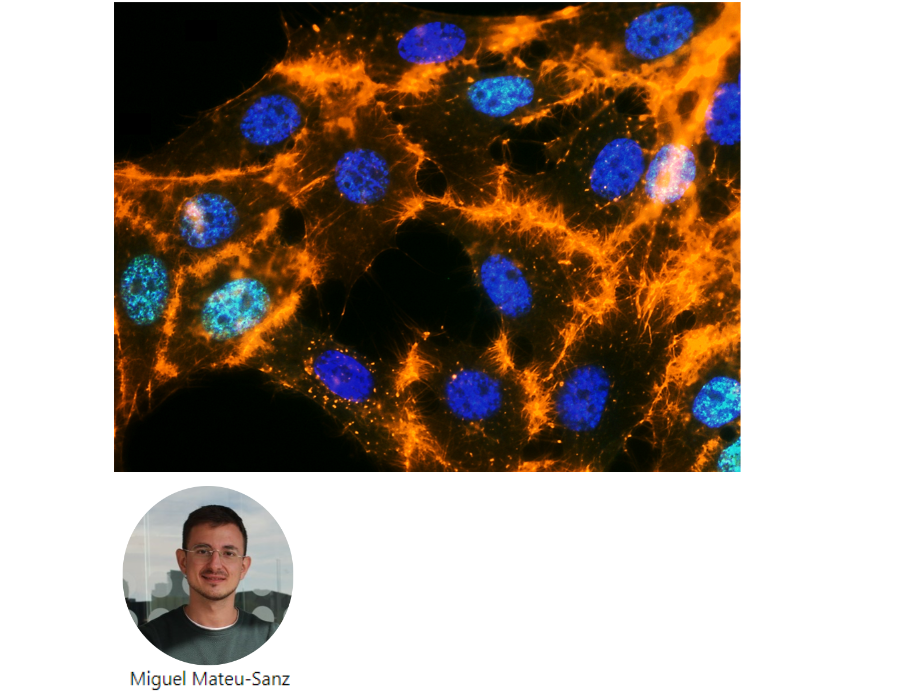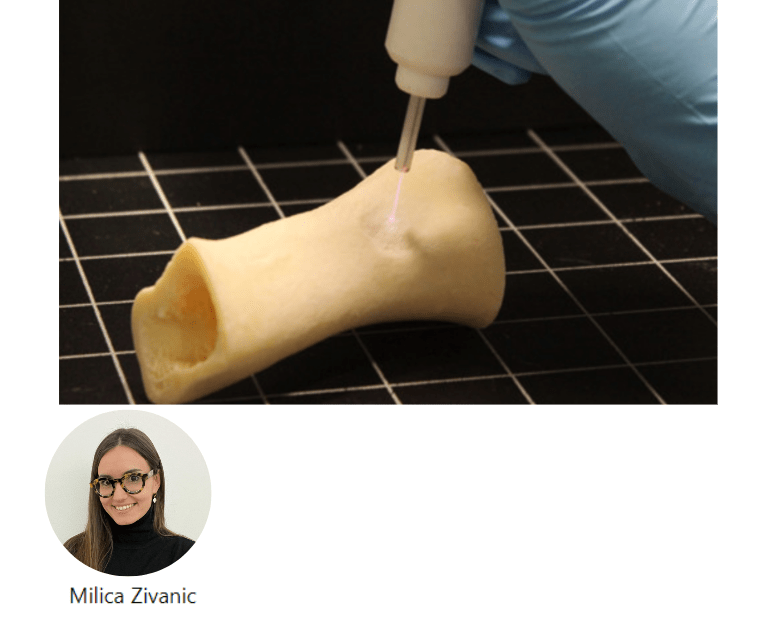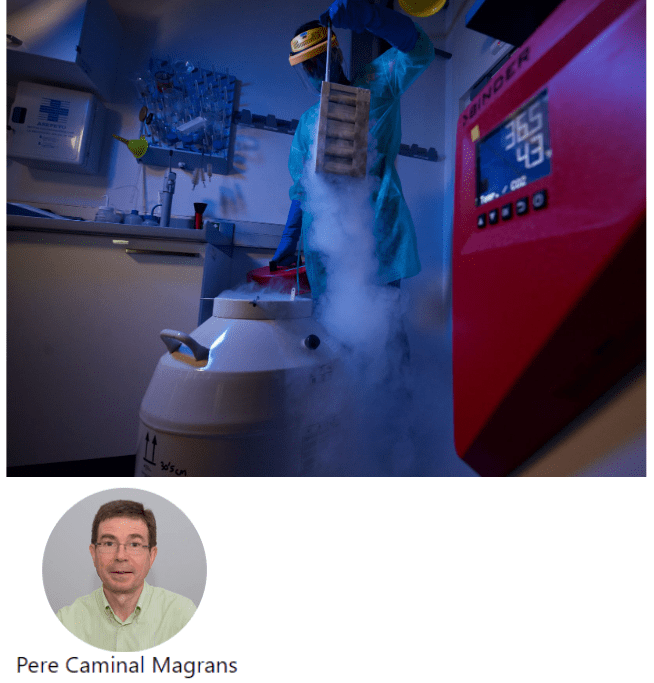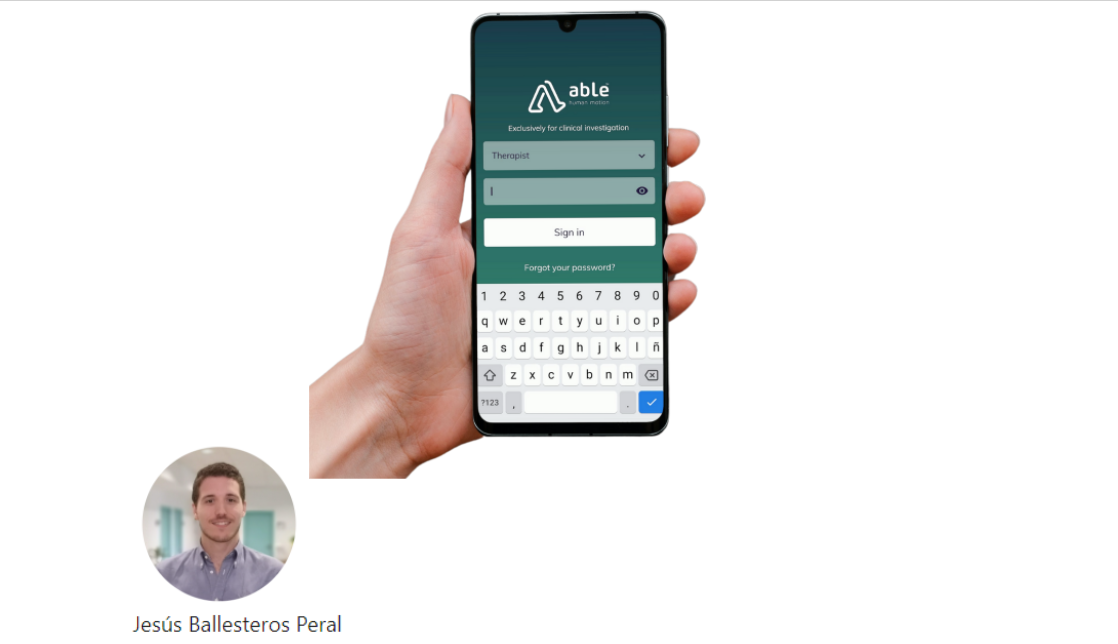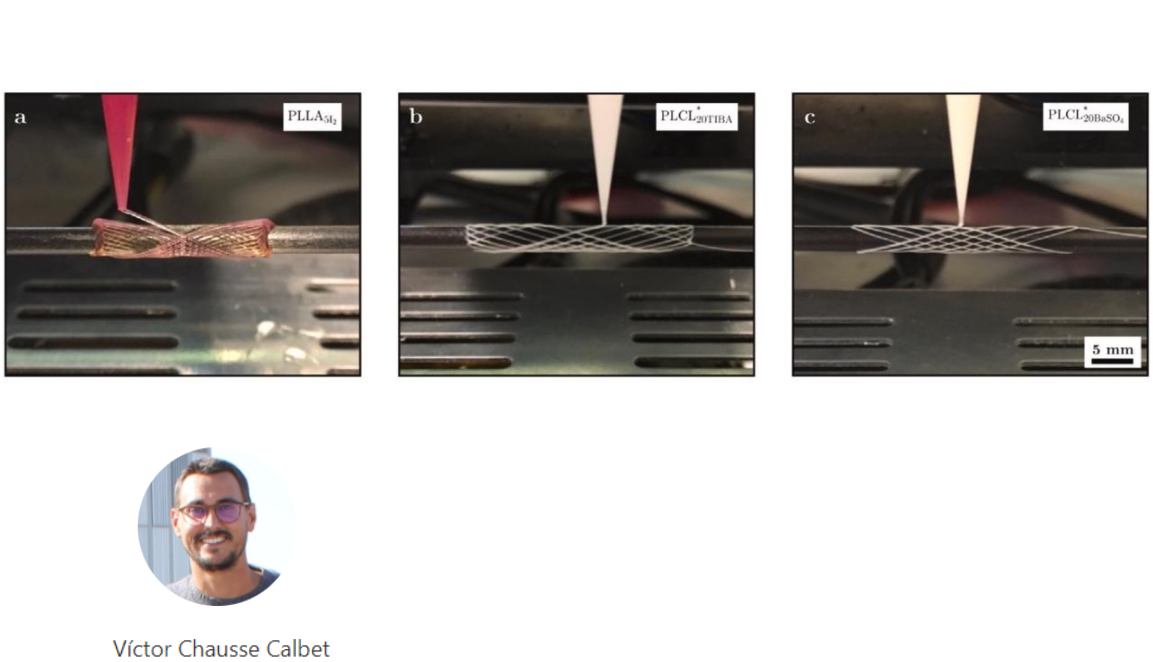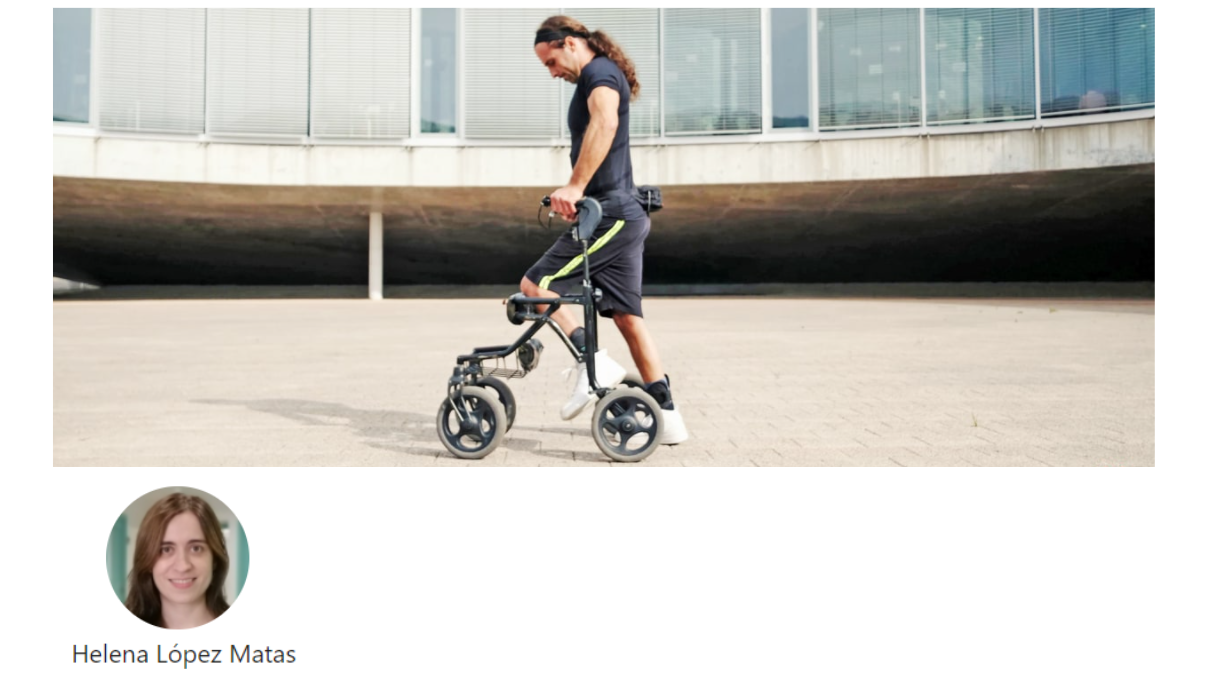
How can inertial sensors assess the effectiveness of neuromuscular disease treatments in children?
In the medical field, the clinicians seek instruments to quantitatively assess the patient’s movement to evaluate the progression of the disease. In the motion analysis field, there are different tools to quantify the movement: goniometer, the optoelectronic motion capture and wearable sensor. All of them have positive and negative aspects but latterly the wearable sensors are gaining popularity thanks to some of their main characteristics like small dimension, light weight and reduced price. In particular, the IMUs have gained popularity because they allow for a quantitative and objective analysis outside the laboratory. In this context, the ArmTracker will represent a useful device to objectively assess and continuously monitor the motor function of the upper limb in children with DMD and SMA.
Cold Plasma-Treated Ringer’s Saline: A Weapon to Target Osteosarcoma
Osteosarcoma (OS) is the most common type of bone tumor which appears in long bones and mainly affects children, adolescents and young adults. Despite its low incidence, it is ranked among the most frequent cause of cancer-related death in child. Current therapy for OS consist in surgical resection of the tumor, combined with chemotherapy or radiation, but patient survival still remains relatively low (50-60%) and it is associated with systemic toxicity and side effects. For these reasons, innovative anti-cancer therapies are of interest. Cold atmospheric plasmas (CAP) are a highly reactive state of the matter that can be created by applying an electrical discharge to a gas. CAP are a source of reactive molecules, UV and electromagnetic fields that can be employed for different biomedical purposes, like antimicrobial sterilization and wound healing. Recently, CAP have also been suggested to target a wide range cancer cells without damaging healthy cells and tissues. Although further investigations are needed, the results of the present work provide evidence of PCL as a promising tool for OS treatment.
A cancer treatment written in the stars
Plasma is often found in the universe (stars) where high temperatures and pressures are very common. However, scientists have found a way to generate weakly ionized plasma at near-room temperature and atmospheric pressure. Such plasma is called cold atmospheric plasma and is safe to be applied directly to the cells and tissues. In the last decades, cold plasma has found numerous medically relevant uses, from wound healing and disinfection to cancer treatment. Despite its promise, plasma is facing different clinical limitations. Currently, there are two plasma treatment modalities: direct treatment and plasma-treated liquids. In direct treatment, the treatment target is directly exposed to a source of plasma, which is not very convenient for the treatment of internal tumors as it would require surgery. On the other hand, plasma-treated liquids can be injected to treat internal tumors in a non-invasive manner. However, liquids may be quickly diluted and washed away by the body liquids. Hydrogels may allow to combine plasma technology with tissue-engineering or drug delivery to broaden and improve clinical utility of plasma technology in the future.
Crónica de la Ingeniería Biomédica en España: 1976-2000
La ingeniería biomédica combina los criterios de diseño en ingeniería y las herramientas de análisis provenientes de las matemáticas, la física y la química persiguiendo la resolución de problemas en áreas como la medicina, biología, biotecnología y farmacia. Podría definirse, brevemente, como la aplicación de los principios de la ingeniería a las ciencias de la vida. En este artículo se recoge la trayectoria del Dr. Pere Caminal Magrans, uno de los pioneros e impulsores de la ingeniería biomédica en España y sin el cuál, no habríamos llegado hasta el momento actual.
L’experiència d’ARM2u, l’equip universitari de l’ETSEIB participant del CYBATHLON
Arm2U és un equip universitari fundat el 2018 a Barcelona, actualment situat al Campus ETSEIB de la Universitat Politècnica de Catalunya (UPC). L'equip consisteix en un grup multidisciplinari d'estudiants d'Enginyeria de postgrau i de grau que comparteixen l'ambició d'empènyer els límits de la indústria protètica. L'equip se centra en el disseny i construcció d'una pròtesi mioelèctrica de l'extremitat superior del cos humà. Aquesta pròtesi està enfocada en complir els requisits de Cybathlon i en adaptar-se en els diferents pilots que col·laboren amb el projecte. Així i tot, l'equip no cerca únicament obtenir una pròtesi per a satisfer les bases de la competició i superar les seves proves de manera satisfactòria, sinó que es consideren també els diferents aspectes de la rutina dels possibles usuaris, perquè l'artefacte es pugui adaptar i arribar a ser realment funcional en l'ús diari.
3D printing of bone grafts. The key of correct and quick bone healing
CREB researchers have made a critical assessment of the recent progress made in the application of 3D printing technologies for bone regeneration, focusing especially on the design of personalized bone grafts. They highlight the possibility to incorporate pharmaceutics into the bone grafts and the analyze the advances in the translation of the 3D printing technology to the biomedical industry and the clinics. Upcoming advances in commercial 3D-printed bone grafts are expected following recent research advances, aiming at mimicking better and better the natural bone at different levels. Another field of improvement is related to biological performance. Although most current 3D-printed ceramic grafts present excellent biocompatibility, they are still far from the performance of natural bone.
Design of patient-specific assistive devices using optimal control simulations
Understanding better how movement is produced, can help us to find new treatments, to define novel rehabilitation plans or to design personalised assistive devices to improve the mobility of people with skeletal and neuro-muscular disorders. This can be done through motion simulation using mathematical models that represent the human neuro-musculoskeletal system. At the Biomechanical Engineering Lab, they developed an optimal control problem formulation capable of predicting different patterns of crutch-assisted walking. Then, they investigated whether the use of a computational approach to personalise pre-defined knee actuation parameters for an active knee-ankle-foot orthosis would be a better choice than the current trial-and-error approach. They explored different optimal control problem formulations that allowed to simulate different pre-defined assistive knee angle trajectories, so that the best walking pattern for a specific individual with spinal cord injury could be identified.
ABLE Care – the rehabilitation app to walk again
ABLE Care allows quick, easy, and intuitive access to the profile of each user, where the most relevant information about their injury and the parameters and adjustments of the exoskeleton are recorded. It allows optimizing the time of the session, reducing the time necessary for its preparation. Thus, the time during which the patient is performing gait training is maximized. In addition, it allows monitoring the patient's evolution through quantifiable metrics such as the number of steps and distance traveled, standing time, and walking time. If necessary, it allows a more exhaustive analysis to obtain more information about the efficiency of gait. ABLE Care, in the same way as the exoskeleton, has been developed through co-creation with clinical professionals and patients that have been involved since the beginning of the project.
Solvent-cast direct-writing as a fabrication strategy for radiopaque stents
Do we really know why cholesterol is dangerous and what problems may it cause in the long term? If you have too much cholesterol in your blood, it can combine with other substances in the blood to form plaque, which sticks to the arteries' walls, in a process known as atherosclerosis. The work developed by CREB researchers presents a versatile 3D Printing fabrication strategy for radiopaque bioresorbable stents. The versatility of the approach allows for patient-specific customization in terms of material and printing design in order to achieve sufficient mechanical support with suitable degradation rate. Future perspectives include the addition of antiproliferative drug into the stents and monitor its release, or surface functionalization with peptides in order to enhance endothelial cell adhesion.
Open Innovation: almost 20 years of trajectory
Nowadays, 78% of companies claim to perform some type of open innovation, achieving better results than those that continue with a closed innovation approach. Some of the benefits that have been evidenced are better financial results, mitigation of risks and costs or decreased time to market. Innovation culture within companies and other types of organizations became a fundamental element in their operation. Henry Chesbrough is attributed to be the father of open innovation since the term was first coined in a book published by him in 2003. Almost 20 years after Chesbrough's first book, the balance of implementing open innovation seems to be positive, however, it has been evidenced that there are still many challenges ahead to overcome, even more in this current era of rapid change and uncertainty.
The future of rehabilitation after a spinal cord injury: neuroengineering and robotics
In recent days, numerous media have reported the news of a great advance for science, and especially for all those people with spinal cord injury and their medical and caregiver teams. The ONWARD team has developed an epidural electrical stimulation system using electrodes placed in the epidural space (between the vertebrae and the spinal cord membrane), which has allowed subjects to walk again. The ABLE Exoskeleton is a medical device designed to facilitate the work of different therapists to perform gait assistance. Devices such as the ABLE Exoskeleton become a very useful tool to be able to get the most out of the intervention, adapting the level of assistance (force made by the robot) in each joint to the specific needs of the patient in each phase of the rehabilitation process.
Anàlisi de la recerca i transferència en els camps bio i tecsalut a la UPC. La UPC ha de co-liderar l’ecosistema català en salut?
Les xifres analitzades evidencien com el sector bio i de les tecnologies de la salut atorguen un avantatge competitiu que caldria acompanyar d’una estratègia específica dins de la UPC per impulsar-lo i tenir més impacte. Així, aquesta activitat generada si s’organitzés millor internament i hi hagués una estratègia de projecció ambiciosa cap a l’exterior, permetria col·locar a la UPC com un agent clau del sector i de l’ecosistema -que actualment s’està redefinint i accelerant arrel de la situació pandèmica viscuda-. Les solucions tecnològiques desenvolupades conjuntament amb hospitals, empreses i institucions fan de la UPC un soci clau per a la majoria de projectes que s’estan gestant. Aprofitem l’oportunitat?




